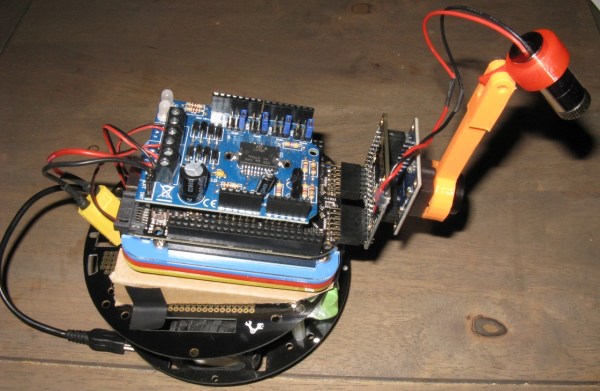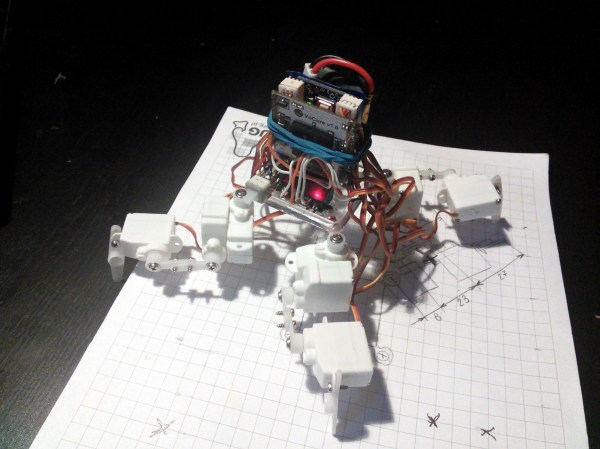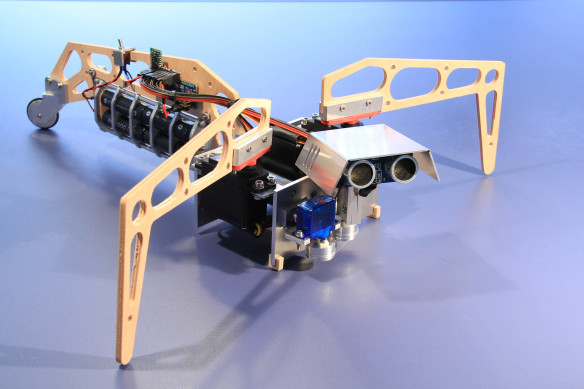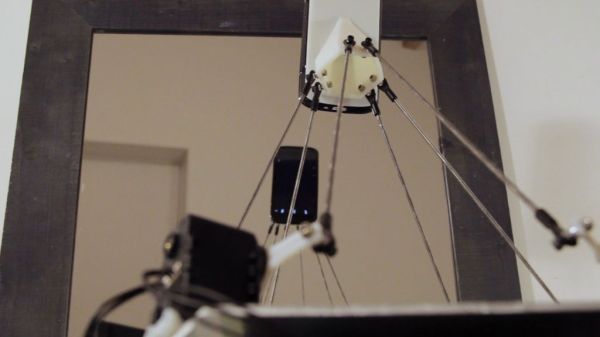Not too many people will argue that Robot Arms aren’t cool. [Dan] thinks they are cool and purchased a LabVolt Armdroid robotic arm on eBay for a mere $150. Unfortunately, he did not get the power supply or the control unit. To most, this would a serious hurdle to overcome, but not for [Dan]. He opened up the robot and started probing around the circuit board to figure out what was going on.
Since there was a DB9 connector on the outside of the robot arm, he assumed it was a standard RS-232 controlled device. Good thing he checked the internal circuitry because this was not the case at all. There was no mircocontroller or microprocessor found inside. [Dan] painstakingly reversed engineered the circuit board and documented his results. He found that there were SN76537A chips that drove the 6 unipolar stepper motors and SN75HC259 latches to address each individual motor.
Now knowing how the robot works, [Dan] had to figure out how to control the robot from his computer. He started by making a custom Parallel Port to DB9 cable to connect the computer to the arm. After a series of several programs, starting with simply moving just one arm joint, the latest iteration allows manual control of all joints using the computer keyboard. A big ‘Thanks’ goes out to [Dan] for all his work and documentation.









 Hardware-wise, the #selfie bot is a Stewart platform made from six servo motors and a few pieces of carefully measured pushrod connected with swivel-ball-links. An android phone is mounted on the end effector which acts functionally as the robot’s face and eyes. To make it self-aware in a sense, [Ajna] and [Hersan] created their own recognition software with Open CV using a collection of sample images of various phones as reference points. As soon as the robot recognizes itself in the mirror as indicated by specific words flashing on its screen, it takes a picture, immediately uploading it to its own
Hardware-wise, the #selfie bot is a Stewart platform made from six servo motors and a few pieces of carefully measured pushrod connected with swivel-ball-links. An android phone is mounted on the end effector which acts functionally as the robot’s face and eyes. To make it self-aware in a sense, [Ajna] and [Hersan] created their own recognition software with Open CV using a collection of sample images of various phones as reference points. As soon as the robot recognizes itself in the mirror as indicated by specific words flashing on its screen, it takes a picture, immediately uploading it to its own 








